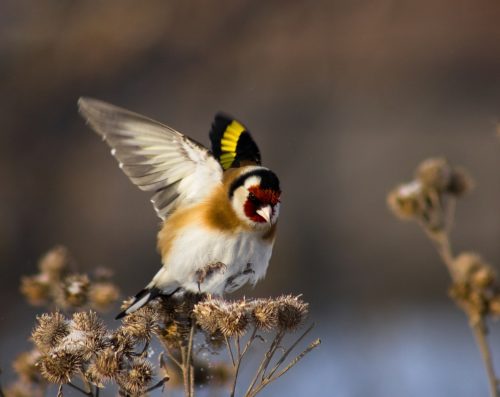
Engage your students in STEM education using Activity 43, “Have Seeds, Will Travel” from PLT’s PreK-8 Environmental Education Activity Guide. In this activity, students observe, identify, and model the various ways plants disperse their seeds.
Getting Started: Most plants reproduce with seeds, which come in all shapes and sizes. Some are large like a bur oak acorn with an average of 75 acorns per pound, and some are small like the eastern cottonwood with an average of 350,000 seeds per pound. The ways plants disperse seeds are both amazing and necessary.
Essential Questions: Which seed characteristics are successful adaptations for effective dispersal? How (and perhaps why) does this change from species to species?
Task: Use scientific reasoning to support an explanation for how specialized plant structures affect the probability of successful reproduction. (Next Generation Science Standards: Growth, Development, and Reproduction of Organisms)
 STEM Strategies
STEM Strategies
Science
Challenge students to think about why seed dispersal is important, and then invite them to investigate various dispersal mechanisms. Discuss the following questions.
- Which seeds have been known to travel the farthest?
- How do the size, shape, weight, and dispersal strategies of seeds affect the distance they travel?
Technology
Using these short video clips, have students examine the design that allows seeds to:
Students can use this information to help them complete the “engineering” task below. Consider asking students to create a short video, either in teams or on their own, that explains how they would design a seed that could travel long distances. If they choose to create a prototype, have them film and share their chosen seed dispersal designs in action.
Engineering
Once students are familiar with the multiple mechanisms of seed dispersal, have them design and test their ideas. For example, students might create prototypes of their designs using organic materials (wood, fiber, paper, etc.) to carry dried lima beans. Students can test their designs to see if they can get their lima beans to: 1) float in water for 5 minutes; 2) stick to an animal and get carried over a distance of 10 feet; or 3) float in the air over a distance of 5 feet.
Math
As part of the “engineering” design challenge above, students will measure distances and durations for each seed traveled. For an additional math challenge, ask students to scale their design down to size. Using proportions, have students calculate how far or how long their seeds would travel in the real world if the sizes of their designed seeds were reduced (to the size of a maple samara or milkweed seed, for example).
Additional Resources
- Check out this 4-H video about the importance of and mechanisms for seed dispersal.
Don’t have PLT’s PreK-8 Environmental Education Activity Guide?
- Purchase a print guide or e-book, available from PLT.org, Amazon and other places where books are sold.
- Get it through your PLT State Coordinator along with hands-on professional development, alignments to state standards and other state-specific supporting resources.
Don’t consider yourself a formal teacher?
- Check out PLT’s Have Seeds Will Travel family activity. We have 40+ nature activities for families that can be easily used by parents, grandparents, youth group leaders, nature centers, and other nonformal programs.



3 comments on “STEM: Have Seeds, Will Travel”
Can’t wait to do this on Friday with my 2 science groups!
Do you have suggestions of materials to use for the STEM challenge
1) float in water for 5 minutes; 2) stick to an animal and get carried over a distance of 10 feet; or 3) float in the air over a distance of 5 feet.
Thanks for your question Coleen. Suggestions for materials to use can be found in PLT’s Have Seeds, Will Travel activity (Activity #43 in our PreK-8 Guide available on shop.PLT.org). For example,
1) float in water for 5 minutes: materials can include popsicle sticks, aluminum foil, Elmer’s School Glue, plastic straws, corks, masking tape
2) stick to an animal and get carried over a distance of 10 feet: materials can include popsicle sticks, toothpicks, cardboard, egg cartons, cotton balls, string, and rubber bands
3) float in the air over a distance of 5 feet: materials can include popsicle sticks, toothpicks, cardboard, egg cartons, cotton balls, string, and rubber bands